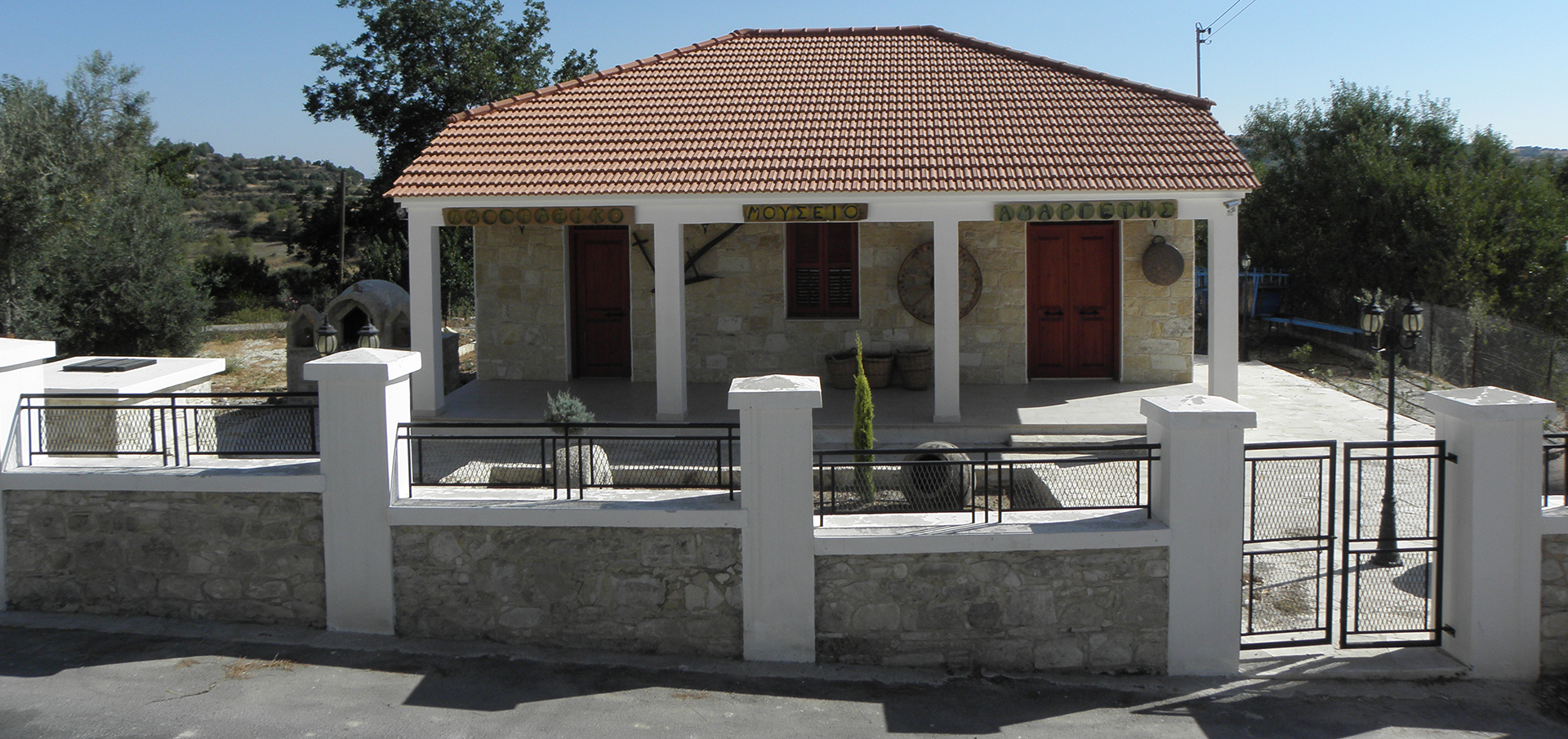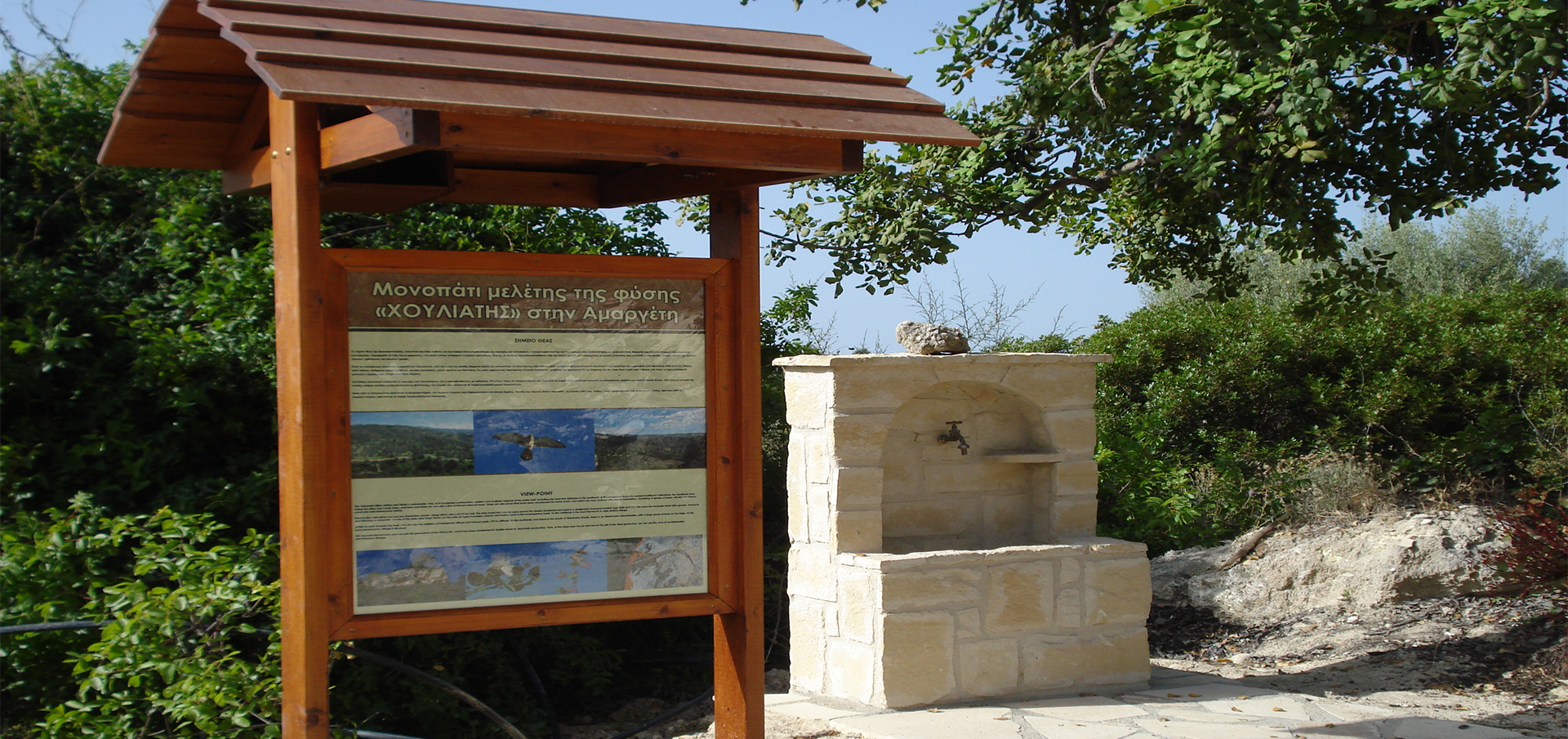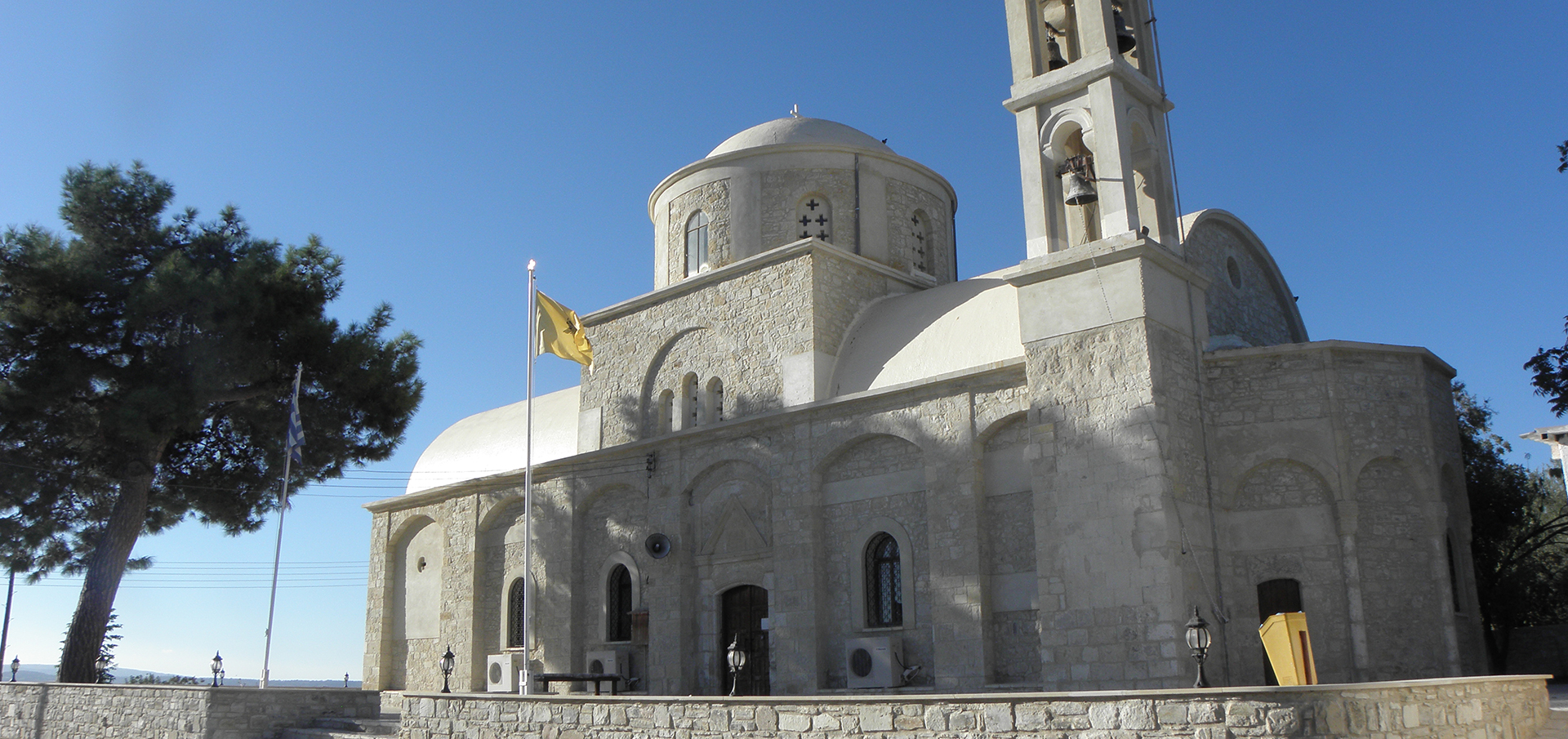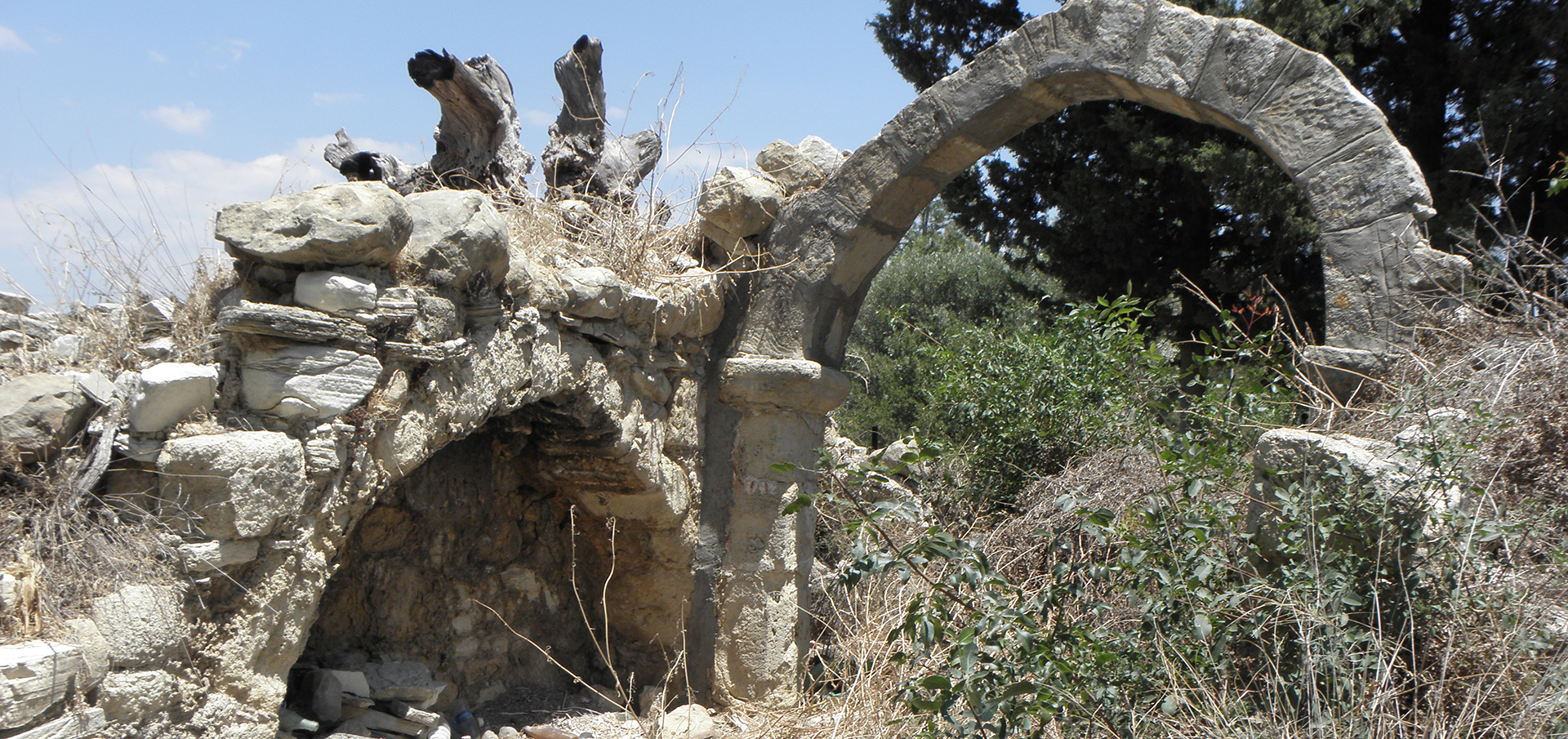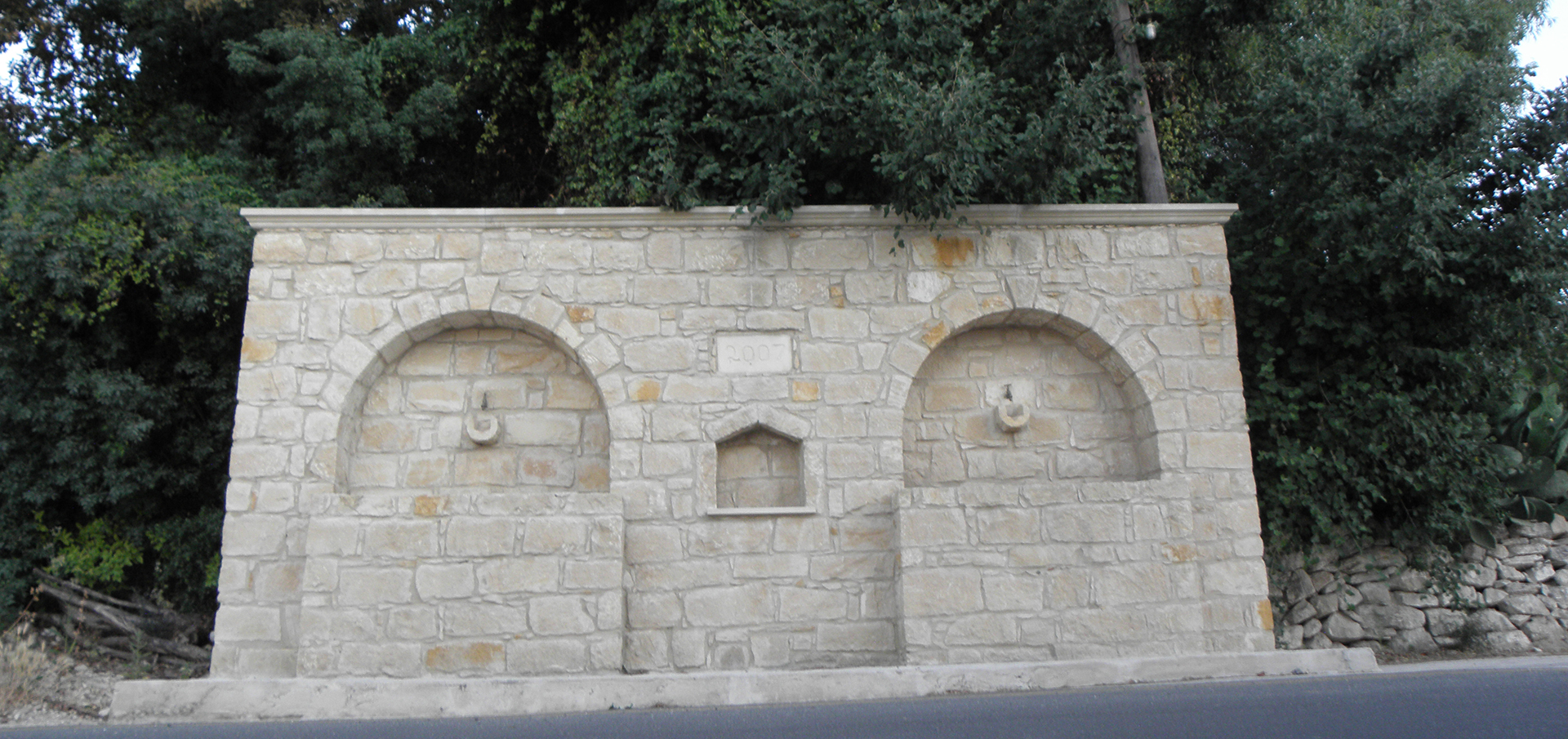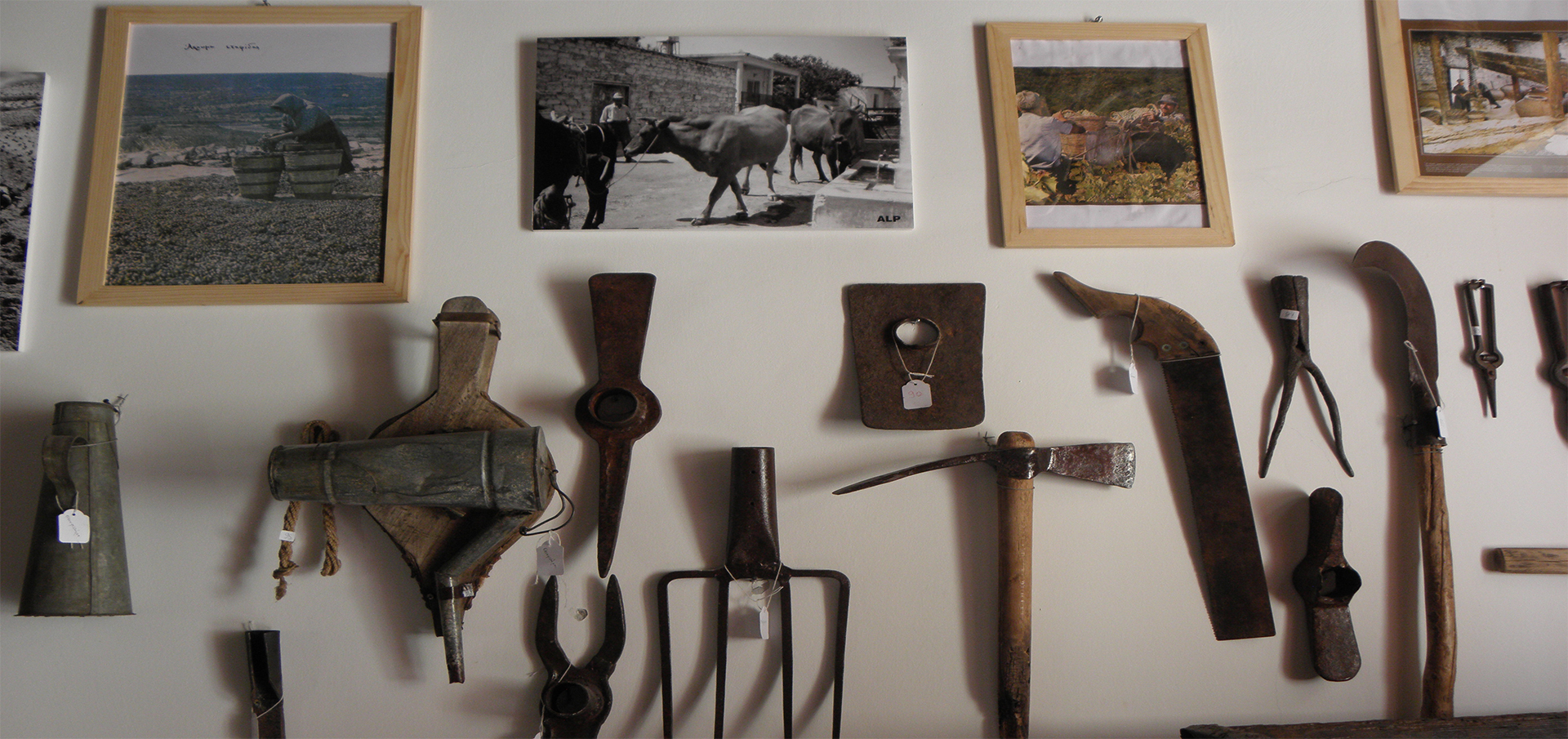History
The village
Amargeti, a village of unique beauty with magnificent archaeological findings, is located east of the town of Paphos and belongs to the geographical region of Ampelochoria.
Geographical and historical framework
The village is built on an altitude of 390 metres and the annual rainfall is about 600 mm. The scenery is divided by the river network consisted by the river Ezousa on the west and the river Xeropotamos on the east. As the Great Cyprus Encyclopaedia characteristically remarks, “the angle towards the two valleys is appreciable”. The relatively wide alves of Xeropotamos with the meanders and its small alluvial valley is really astonishing”.
Vineyards, almond-trees, olive-trees, cereals as well as several fruit-baring trees such as apple-trees, pear-trees and peach-trees, thrive in our village.
Both, during the period of the Frankish and Venetian occupation, Amargeti belonged to a feudal lord. In particular, Mas Latrie, includes Amargeti in the list of villages that used to be fiefs during the aforementioned periods.
“Sculptures and inscriptions on bases of statues of the Hellenistic and Roman era” that were discovered in the area of Amargeti are of particular interest, both from a historical as well as from an archaeological point of view.
Sacellariou remarks that “similar ancient pots were discovered in the ancient Mycenae, in Greece”. He also remarks that ten of the inscriptions “contain the name of ‘Opaonos Apollona’ and one the name of ‘Melanthios Apollonas’. He carries on by making clear that “in this case, Melanthios should not be considered as the second name of Apollonas”.
As far as education is concerned, the first school, according to Loizos Philippou, began operating in 1865 and the first teacher taught from 1865 until 1868. This first school was housed in a room rented by the students’ parents. What is more, the parents were responsible for paying the teacher. Philippou writes that the teacher was “given a salary by the parents of the students and received the customary gifts every Saturday”.
Road network
Until the early 90’s, the village was accessed only through the road heading from Timi to Panagia and which is very tiring since it had a lot of curves. After continuous efforts by the residents of the village, a new road from Agia Varvara has been constructed.
Naming
The naming of the village, in accordance with the Great Cyprus Encyclopaedia, is possibly connected to the female Frankish name Amargueti, which was really common in the court of the Lousinianians.
It must be mentioned, that in old maps, the village is marked under the name “Margieti”.
Population
Amargeti, according to the inventory of 2001, numbers 171 residents. Our village, until 1958 was mixed. In particular, during the inventory of 1946, 86 out of 328 residents were Turkish Cypriots. In 1958, the Turkish Cypriots abandoned the village permanently. As it is observed in the following chart, the gradual decrease of the population began in 1960 and continues up until today.
| Year | Population | Year | Population |
| 1881 | 328 | 1960 | 551 |
| 1901 | 444 | 1976 | 478 |
| 1921 | 495 | 1982 | 380 |
| 1946 | 653 | 2001 | 171 |
The village today
The settlement in the core of the village is relatively compact and becomes sparser in the periphery. In the centre of the village there are old houses, traditional water taps made of local stone, as well as narrow alleys. The central square with the paved court, the building of the Community Council which is also built with local stone, the Heroes’ Monument and the tall eucalyptus really stand out in the village.
Churches
There are two churches in our village. There is a main church dedicated to Zoodochos Pigi (Life-giving spring) and a chapel dedicated to Saint George. Churches
Occupations
The residents of the village deal with agriculture and stock-breeding, but mostly with the cultivation of vineyards. However, some of the residents of the village work in Paphos, since it is only a 25 minute drive from our village.
What is more, in our village, people deal with the production of wine and ‘Zivania’ which is the traditional alcoholic drink of Cyprus. Amargeti, as it is confirmed by the Great Cyprus Encyclopaedia, “disposes several boilers for the production of Zivania”.
Source:
Great Cyprus Encyclopaedia, Filokipros Publications, vol.2




Projects
The Community Council of Amargeti has planned and effectuated a series of projects aiming at the development, progress and beautification of the community. Cited below are the projects that have already been completed, as well as those which have already been planned and will be effectuated.
Completed Projects
- Creation of a Folk Art Museum.
- Reshaping of the square at the centre of the community.
- Creation of the “Amargeti Adult Centre”.
- Restoration of the Olive-mill at the external space of the Folk Art Museum.
- Renovation of Turkish-Cypriot buildings, and in particular the Turkish-Cypriot school and a Turkish-Cypriot estate.
- Construction of a Multiple-Usage Hall west of the square.
- Construction of retaining walls and lining with traditional stone.
- Enrichment of greenery areas in various spots of the community.
- Construction of a water tank with a capacity of 20 tons for fire extinguishing purposes.
- Creation of a Nature Trail along the perimeter of the Canyon.
- Creation of “View Spots”.
- Construction of rainwater drain-pipes.








Planned projects
- Construction of sports courts and pitches within the line of the Social Sports programme and in cooperation with the Cyprus Sports Organization.
- Beatification of the space at the location “Gerolakkos”.
- Construction of a central stony road which will cross the square.
- Construction of a Regional Elderly Persons’ Home.
- Construction of Agrotourism accommodation.
Antiquities
The archaeological site of Amargeti is known for its sculptures and inscriptions from bases of statues which belong both to the Hellenistic and Roman Era. According to Sacellariou, apart from inscriptions, figurines and pottery were also discovered in the area.
In particular, in the area of Amargeti, as stated by “dedication-inscriptions”, there used to be a temple dedicated to God Apollonas. When Hogarth discovered the remains of an ancient temple, located near our village, towards the end of the 19th century and more specifically in 1881, “he assumed that it was the temple of Melanthios Apollonas”, who according to him “cured the sick with a herb that was produced by melanthius, a kind of plant named Nigella sativa”.
Although there have not been any systematic archaeological excavations in our village, as we have previously mentioned, several inscriptions have been discovered. The most well known inscription among those discovered is the one found in a location called “Petros Anthropos”. This inscription was placed on a marble statue base, which is dated back to the 1st century B.C.
This inscription testifies that the statue was dedicated to God Apollonas, since the word “Apaon which was written on the inscription derives from the word ‘Opaon’, which was the name used to worship God Apollonas Melanthios”. Moreover, the statue was dedicated by Timagoras as a vow for his son. As far as the year LK is concerned, which is also mentioned on the inscription, many explanations have been given. On the other hand, concerning the month “Arimo”, “the calendar of the era in which it belongs, is unknown”. According to an interpretation, LK is identified to the “20th year of reign by Ptolemy VIII Sotiros II of Latheros, that is, in 96 B.C. when Latheros was in Cyprus”. According to other interpretations, the year might have been either 95/94 B.C, during the reign of Ptolemy X of Alexander I, or 62/61 B.C, during the reign of Ptolemy XIII Avlitis”. The most probable interpretation is considered to be, according to the Great Cyprus Encyclopaedia, the one given by the editor of the sign, who believes that the year mentioned on the inscription is “prior the 21st or the 15th B.C.”
Other inscriptions dedicated to Apollonas Melanthios are:
– An inscription by a man named Artemidoros. The Great Cyprus Encyclopaedia remarks that the saying on this inscription means that “Apollonas is a companion or a good shepherd”.
– An inscription possibly dated back to the year 234 B.C, during the reign of Ptolemy III the Benefactor. This inscription was engraved on a small statue.
– Another one dated back to the 3rd century B.C, engraved on the chest of a small statue.
One more inscription dated back to the 3rd century B.C. was also discovered, which, as the Great Cyprus Encyclopaedia characteristically remarks, is of particular interest. This specific inscription “was discovered in the area Baths of Regaina, where one can find Roman and early Byzantine remains”.
The Great Cyprus Encyclopaedia remarks that “it is the first time that the term engraved on the inscription is answered in Cyprus, although, offerings to all Gods and Goddesses have been found in other parts of Cyprus”.
Apart from the dedication inscriptions to Apollonas Melanthios, an inscription dedicated to Caesars Gaios and Lefkios, sons of Augustus, was also discovered. This inscription was offered by the “teller, ambassador and Chief-general of Cyprus Titos Apicatos Saveinon” and is dated back to the period 2 B.C. – 2 A.D.
Another inscription with a totally different tone is the one dated back to the 1st/2nd century A.D, which “has only been partly interpreted and appears to be an honorary resolution”.
Source:
Great Cyprus Encyclopaedia, vol.2
Road Map
Useful Information
| Useful Information | |
| Telephone Numbers | |
| Community Council President, Georgios Kaizer | 99 63 26 31 |
| Father Papamichael Sergiou | 99 57 83 65 |
| Panagia Police Station | 26 72 30 62 |
| Services | |
| COOP of Amargeti | 26 72 30 36 |
| Community Welfare Committee (EKE) | 26 72 32 03 |
| “Kalamos” Winery | 99 45 05 68, 26 72 32 24 |
| Tourist Accommodation | 26 72 32 12 |
| Kaizer Agrotourism Accommodation | 99 660539 |
| “Αpollon” Tavern | 99 63 26 31 |
| “Zoodochos Pigi” Tavern | 26 72 32 12 |
| Mini Market |


